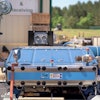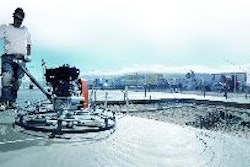
The number of regions beyond California that are adopting aggressive emissions legislation is growing rapidly. We talked with Glen Chrusciel, manager of repower and retrofit at John Deere Power Systems, to see how the movement is affecting rental businesses.
Q: What are the requirements for emissions in nonattainment areas and how do they differ from other parts of the country?
A: The U.S. Environmental Protection Agency (EPA), governing agency of the Clean Air Act, monitors key pollutants like ozone and particulate emissions throughout the country per the National Ambient Air Quality Standards (NAAQS). Areas identified as exceeding minimum air quality standards for any one or a number of air pollutants are classified as nonattainment areas by the EPA. Locations designated as nonattainment areas must submit air quality plans, known as State Implementation Plans (SIPs), demonstrating how state or local legislatures will take action to attain the standards. Retrofit programs requiring emission reduction on legacy off-road diesel equipment has been one of many approaches these regulators have taken to achieve attainment.
Local regulation of nonattainment areas varies greatly from one region to another because not all nonattainment areas are dealing with the same pollutants and pollutant levels. With local regulations constantly changing, there's no way to guarantee what the situation in specific nonattainment areas will be for equipment owners. For instance, with the recent 24-hour fine particles (PM2.5) and 8-hour ozone revisions made by the EPA to the National Ambient Air Quality Standards, it is anticipated that the number of nonattainment areas will be increasing in 2010. Equipment owners should always check with their local regulatory authorities to determine how specific local regulations affect them.
Q: What are the requirements of equipment owners within nonattainment areas? Do older pieces of equipment always need to have engines replaced? Are there any loopholes?
A: The impact on equipment owners in nonattainment areas, which includes most major metropolitan regions across the United States, varies. They all strive, however, to achieve significant emission reduction from legacy engines. The three primary ways to achieve compliance are:
With drastically varying programs in each nonattainment area, equipment owners will need to work with their local regulatory authorities to determine how specific local programs will affect them before purchasing new equipment or determining whether they're going to retrofit or repower an existing piece of equipment.
There are other alternatives equipment owners can consider when examining ways to ensure their off-highway equipment achieves compliance. Some large fleet owners have chosen to move their newest equipment to nonattainment areas and use their older equipment elsewhere in the country outside of nonattainment areas. Transferring equipment between locations to meet nonattainment regulations might be an option for larger rental companies.
Q: Does rented equipment fall under the same requirements?
Yes. Rental equipment operating within a nonattainment zone will most likely be subject to the local regulations. The issue is who bears the burden of compliance. It can be the rental fleet owner or rental customer based on the duration of the rental. It is important to check with the local regulator to determine who bears the responsibility.
Q: Are equipment users going outside nonattainment areas to rent equipment so as to avoid retrofitting their own pieces of equipment?
Rental fleet owners outside of designated nonattainment areas are generally not under the jurisdiction of local nonattainment area regulations and programs. However, when this equipment is operating in the local nonattainment area, it will be subject to their local requirements. This means that a contractor cannot rent noncompliant equipment outside of a nonattainment zone and then use it within the regulated area.
Conversely, a rental company located within or near a nonattainment zone might want to consider upgrading its equipment to attract customers working on jobs in the nonattainment zone.
Q: In general, what effect do increasingly strict emissions requirements in nonattainment areas have on rental businesses?
A: The impact on off-highway equipment owners in nonattainment areas - regardless of whether they are rental operations or contractors - is significant and will require that the equipment in their fleets be upgraded to comply with local programs and regulations.
However, there are potential opportunities for rental businesses in nonattainment areas as equipment users turn to rental fleets to help alleviate the costs of upgrading their own equipment to meet local nonattainment regulations. Some contractors might increase their rental activity to avoid shouldering the cost of upgrading or replacing their equipment.



















